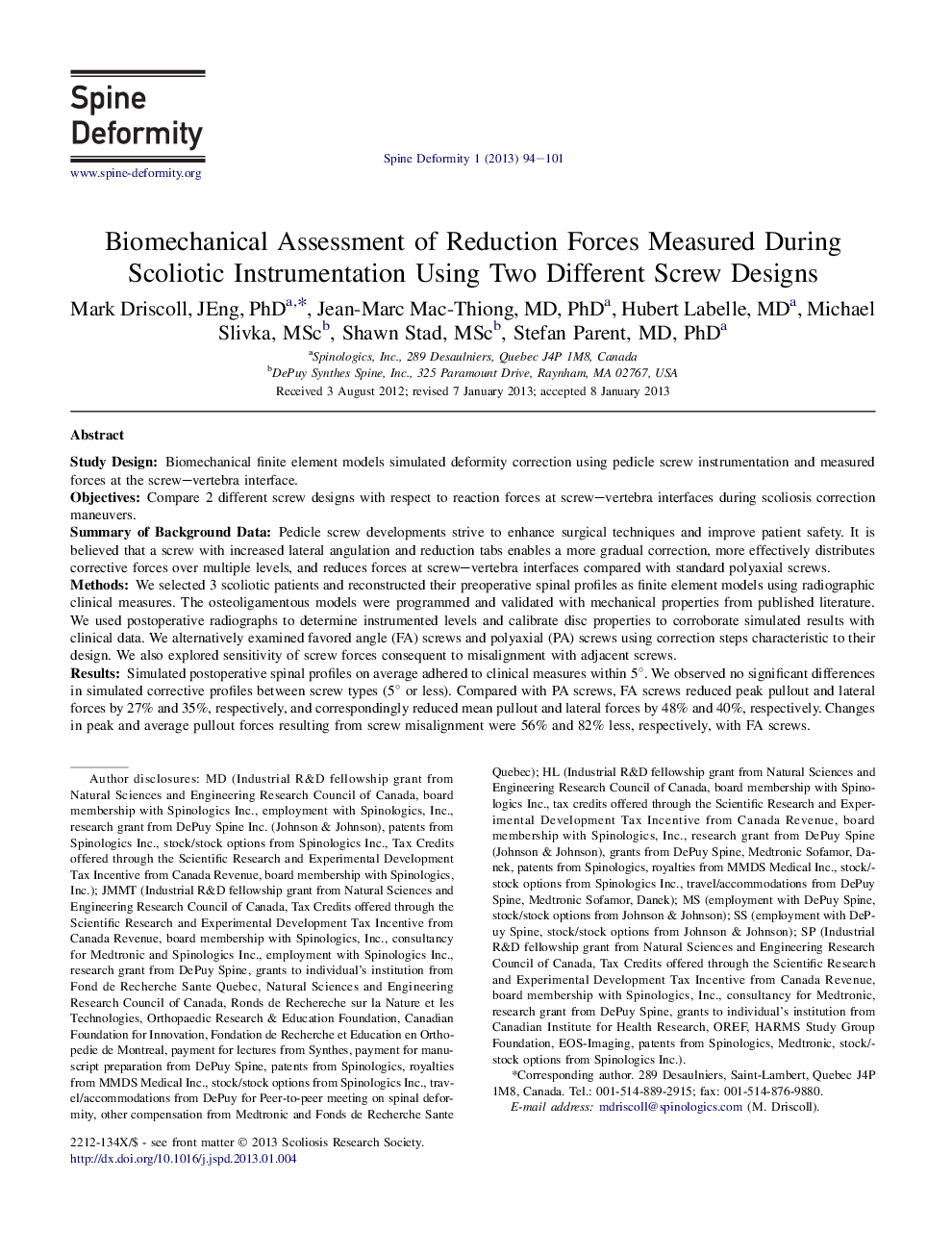| کد مقاله | کد نشریه | سال انتشار | مقاله انگلیسی | نسخه تمام متن |
|---|---|---|---|---|
| 4095584 | 1268541 | 2013 | 8 صفحه PDF | دانلود رایگان |

Study DesignBiomechanical finite element models simulated deformity correction using pedicle screw instrumentation and measured forces at the screw–vertebra interface.ObjectivesCompare 2 different screw designs with respect to reaction forces at screw–vertebra interfaces during scoliosis correction maneuvers.Summary of Background DataPedicle screw developments strive to enhance surgical techniques and improve patient safety. It is believed that a screw with increased lateral angulation and reduction tabs enables a more gradual correction, more effectively distributes corrective forces over multiple levels, and reduces forces at screw–vertebra interfaces compared with standard polyaxial screws.MethodsWe selected 3 scoliotic patients and reconstructed their preoperative spinal profiles as finite element models using radiographic clinical measures. The osteoligamentous models were programmed and validated with mechanical properties from published literature. We used postoperative radiographs to determine instrumented levels and calibrate disc properties to corroborate simulated results with clinical data. We alternatively examined favored angle (FA) screws and polyaxial (PA) screws using correction steps characteristic to their design. We also explored sensitivity of screw forces consequent to misalignment with adjacent screws.ResultsSimulated postoperative spinal profiles on average adhered to clinical measures within 5°. We observed no significant differences in simulated corrective profiles between screw types (5° or less). Compared with PA screws, FA screws reduced peak pullout and lateral forces by 27% and 35%, respectively, and correspondingly reduced mean pullout and lateral forces by 48% and 40%, respectively. Changes in peak and average pullout forces resulting from screw misalignment were 56% and 82% less, respectively, with FA screws.ConclusionsThis analysis demonstrated reduced screw–vertebra peak and mean forces when using a pedicle screw with a favored angle bias and reduction tabs to correct scoliosis. Compared with PA screws, FA screws provide similar correction, decrease forces applied at the screw–vertebra interface, and are more forgiving if misaligned.
Journal: Spine Deformity - Volume 1, Issue 2, March 2013, Pages 94–101